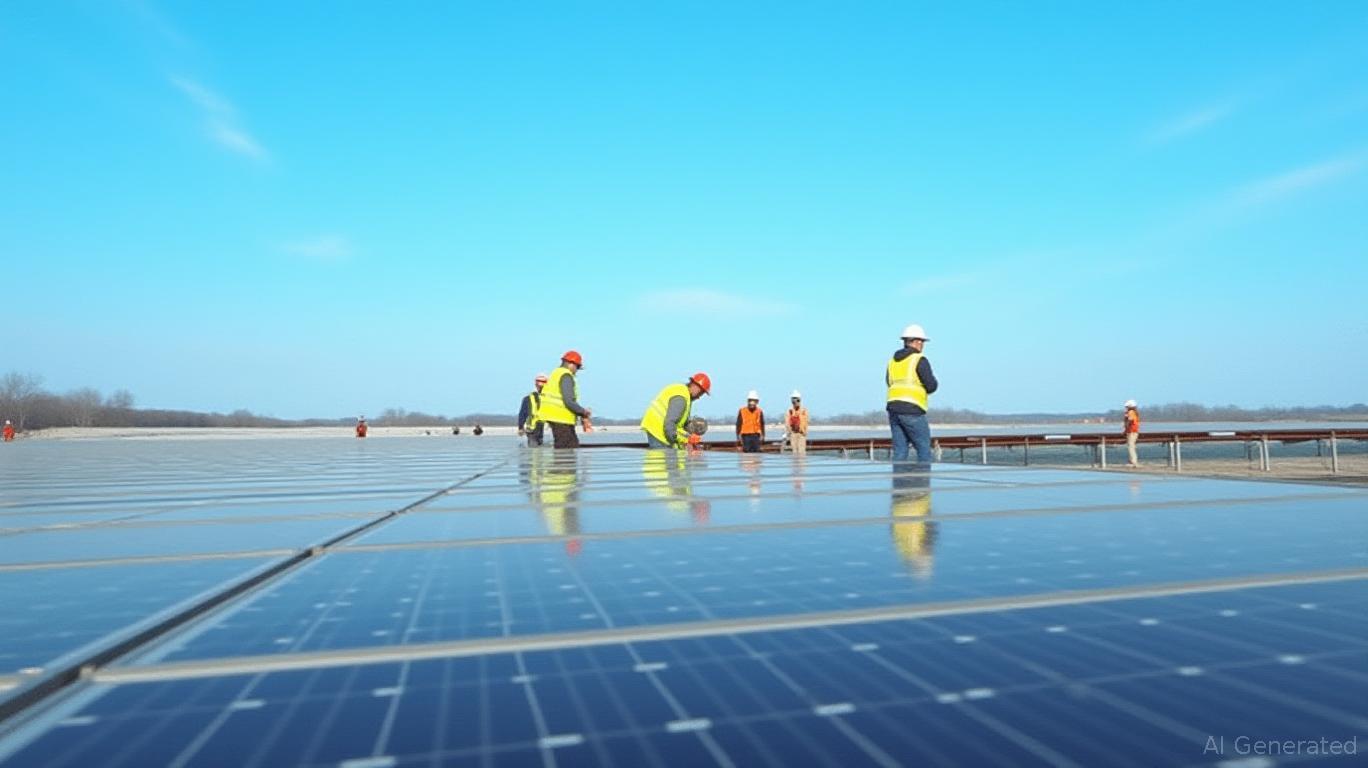Oil's Descent: Navigating the Energy Sector Amid Volatility and Transformation
The global energy landscape in early 2025 has been marked by dramatic shifts. Oil prices tumbled to four-year lows, refining margins crumbled, and geopolitical tensions clouded the outlook. Yet, beneath the turbulence lies a sector in transition—driven by innovation, diversification, and the relentless push toward renewables. Here’s how investors can parse the chaos.
The Descent: Oil Prices and the Perfect Storm
Oil prices began 2025 with a sharp decline, with Brent crude slipping below $60/barrel in April—the lowest since 2019—before rebounding slightly to $65. The collapse was fueled by three interlinked factors:
1. OPEC+ Overproduction: Eight OPEC+ members accelerated the unwinding of voluntary cuts, while others like Kazakhstan and Iraq exceeded their quotas. Total spare capacity soared, overwhelming markets.
2. Trade Policy Uncertainty: U.S. tariffs, though excluding energy imports, sparked fears of recession and demand destruction.
3. Weakened Demand Forecasts: The IEA slashed 2025 oil demand growth to just 730 kb/d, with weaker OECD consumption and China’s muted recovery.

The Short-Term Energy Outlook now projects Brent prices will average $68/bbl in 2025 and $61/bbl in 2026—a stark drop from prior estimates.
Sector-Specific Impacts: Winners and Losers
1. Refining: A Sector in Crisis
Refining margins (crack spreads) have collapsed, with the WTI-Gulf Coast spread dropping to $12/bbl in September 2024—a 83% year-over-year decline. Renewable diesel faces its own overcapacity crisis, with U.S. RIN credits plummeting and European imports flooding the market. Analysts warn of potential refinery closures, which could cut 22% of global refining capacity.
2. Upstream: The Shale Struggle
U.S. shale firms now require $65/bbl to break even, yet prices linger around $65–$70. Permian Basin gas production bottlenecks forced Waha prices below zero for 46% of 2024. However, new pipelines like Matterhorn Express are easing constraints, while water management innovations (e.g., $0.15/bbl reuse costs) are cutting costs.
3. National Oil Companies (NOCs): Diversification or Distress?
NOCs like ADNOC and Saudi Aramco are expanding crude capacity (ADNOC to 5 mb/d by 2027) and investing in integrated refining-chemical projects. Yet, fiscal pressures loom: Saudi Arabia’s breakeven oil price is $79/bbl, and UAE’s $500 billion NEOM green city underscores the urgency to pivot beyond oil.
Opportunities Amid the Storm
1. Renewables: The Long Game
The energy transition isn’t slowing. Baker Hughes aims for $6–$7 billion in low-carbon orders by 2030, while ADNOC’s hydrogen ambitions and UAE’s renewable targets signal a strategic pivot. Investors should favor firms with diversified portfolios—like SLB, which acquired Champion X to boost production-support services.
2. Tech-Driven Efficiency
Oilfield services giants are reaping rewards: the sector posted $50 billion in cumulative net income over three years, driven by cost cuts and digital innovation.
3. Select Upstream Plays
Focus on regions with cost advantages and infrastructure growth. The Permian’s midstream investments and Brazil’s pre-salt projects (e.g., Petrobras’ $72 billion capex plan) offer resilience. Avoid pure-play refiners; instead, target integrated majors like ExxonMobil or TotalEnergies with strong renewable pipelines.
Conclusion: Positioning for the New Energy Reality
The energy sector is at a crossroads. While short-term pain persists—low oil prices, refining overcapacity, and geopolitical risks—the path forward is clear: diversification and innovation. Investors should prioritize:
- Firms with low breakeven costs (e.g., Permian operators with water management tech).
- Companies pivoting to renewables and hydrogen (e.g., ADNOC, Baker Hughes).
- Oilfield services leaders leveraging digital tools and low-carbon projects.
The data tells a stark story: 2025’s oil demand growth is half what it was forecasted earlier, and refining profits have cratered. Yet, the sector’s $270 billion green investment pipeline by 2030—and NOCs’ $500 billion NEOM ambitions—hint at a transformed energy future. For investors, the key is to avoid the losers of the old economy and back the winners of the new one.
In a sector where volatility is the norm, this is a time to think long-term and lean into resilience.










